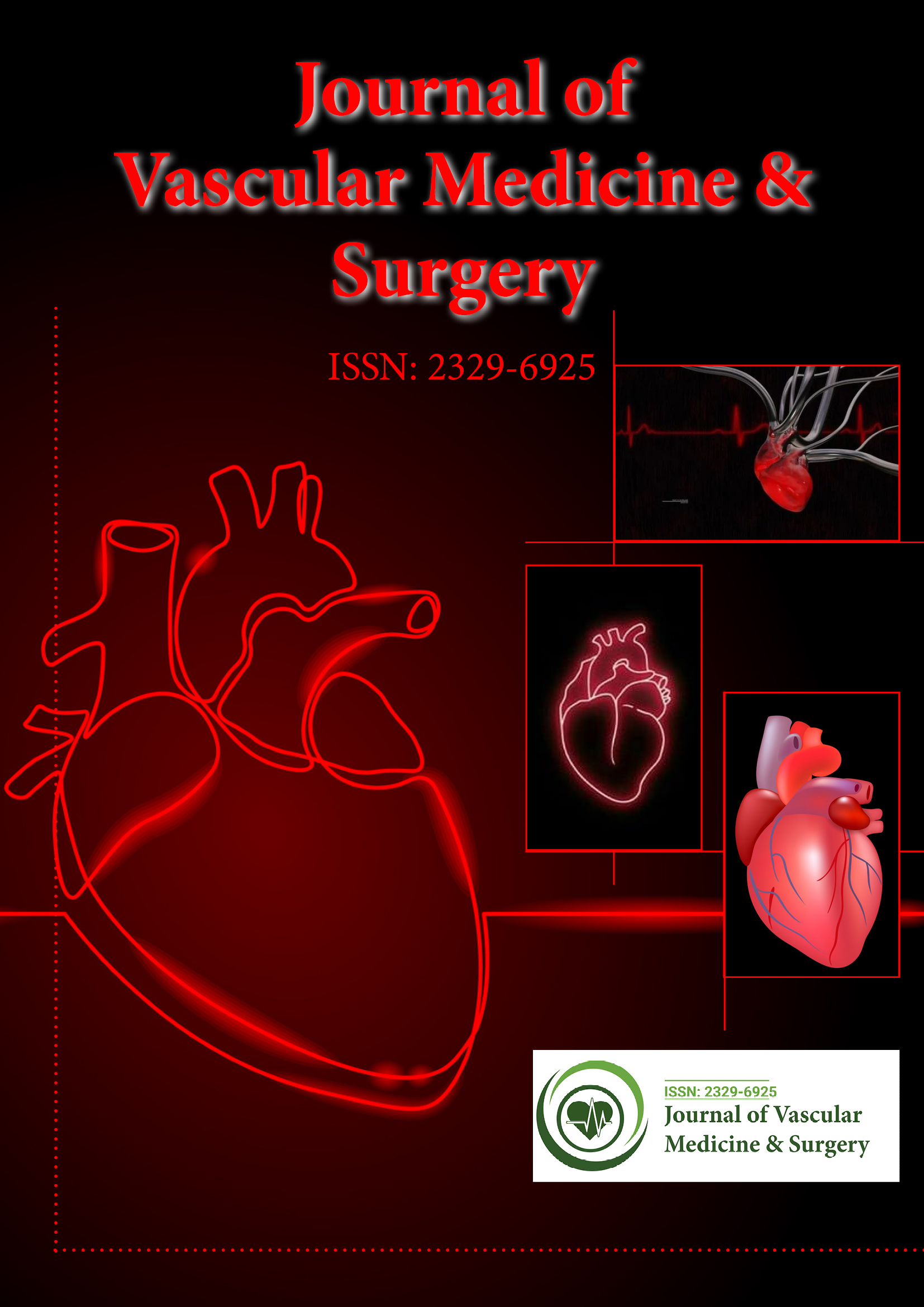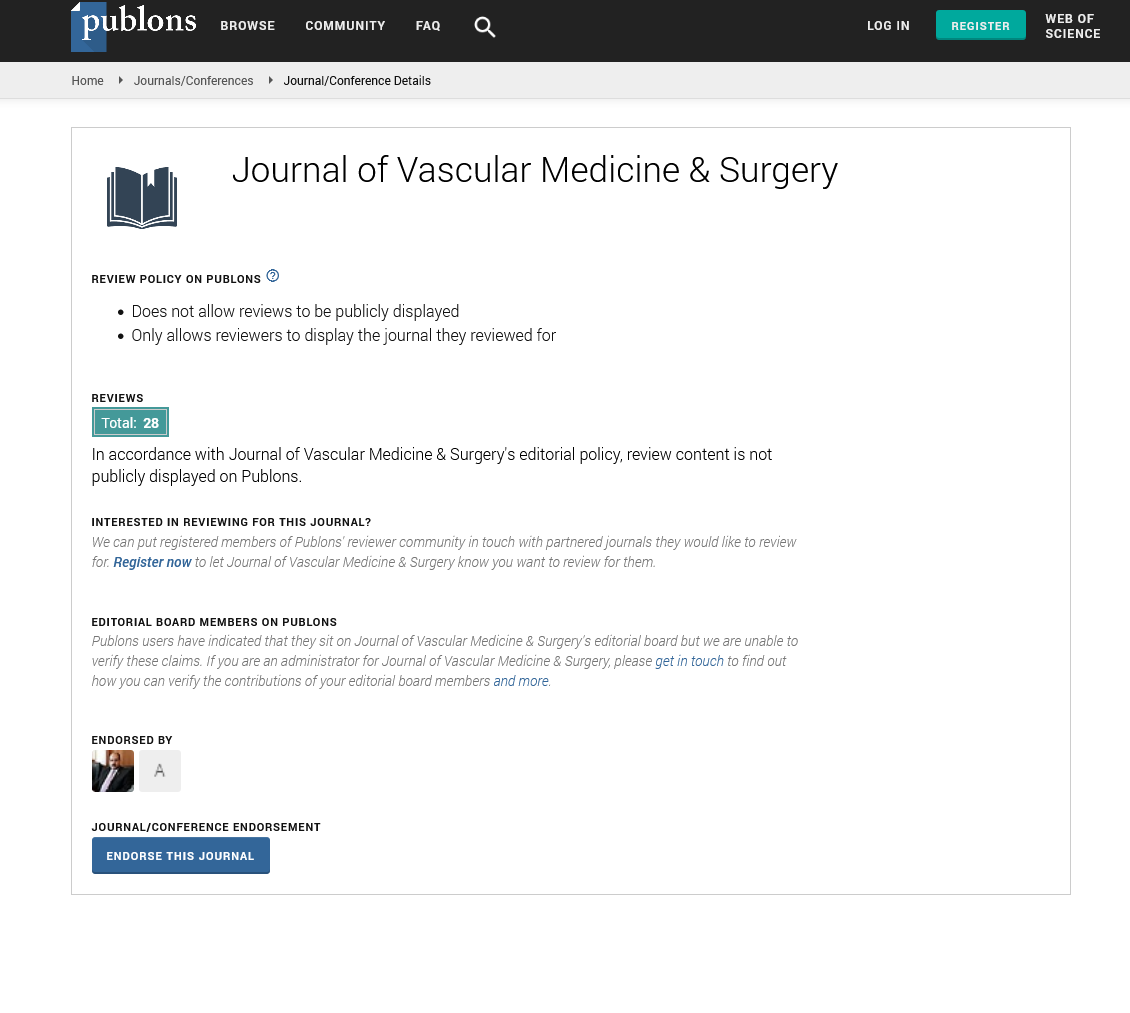Indexed In
- Open J Gate
- Academic Keys
- RefSeek
- Hamdard University
- EBSCO A-Z
- OCLC- WorldCat
- Publons
- Euro Pub
- Google Scholar
- SHERPA ROMEO
Useful Links
Share This Page
Journal Flyer

Open Access Journals
- Agri and Aquaculture
- Biochemistry
- Bioinformatics & Systems Biology
- Business & Management
- Chemistry
- Clinical Sciences
- Engineering
- Food & Nutrition
- General Science
- Genetics & Molecular Biology
- Immunology & Microbiology
- Medical Sciences
- Neuroscience & Psychology
- Nursing & Health Care
- Pharmaceutical Sciences
Opinion Article - (2023) Volume 0, Issue 0
Mechanism of Thrombosis and its Treatment Methods
Brouwer Endeman*Received: 07-Jun-2023, Manuscript No. JVMS-23-22229; Editor assigned: 09-Jun-2023, Pre QC No. JVMS-23-22229 (PQ); Reviewed: 23-Jun-2023, QC No. JVMS-23-22229; Revised: 30-Jun-2023, Manuscript No. JVMS-23-22229 (R); Published: 10-Jul-2023, DOI: 10.35248/2329-6925.23.S16.519
Description
Thrombosis is an important medical condition characterized by the formation of blood clots inside blood vessels. These clots, known as thrombi, it can obstruct the normal flow of blood and provide significant health hazards. Whether occurring in arteries or veins, thrombosis can lead to various life-threatening consequences, including heart attacks, strokes, and pulmonary embolisms. Thrombosis occurs when there is an imbalance between the coagulation and anticoagulation factors in the blood, leading to the formation of a blood clot. The condition can emerge in two forms: Arterial thrombosis and venous thrombosis. Arterial thrombosis frequently arises from atherosclerosis and it can lead to heart attacks and strokes. Venous thrombosis, on the other hand, it involves the formation of blood clots in veins and can result in Deep Vein Thrombosis (DVT) and pulmonary embolisms.
Causes of thrombosis
Various factors contribute to the development of thrombosis. These include:
Prolonged immobility: Involvement into a prolonged period of time, such as long flights or hospitalization, increases the risk of blood clots developing in the legs.
Surgery and trauma: Surgical procedures and significant injuries can trigger a clotting response in the body.
Pregnancy and postpartum: Pregnancy-related changes in blood composition and pressure can promote thrombosis.
Genetic predisposition: Some individuals may inherit genetic abnormalities that make them more susceptible to thrombosis.
Obesity and lifestyle factors: An unhealthy lifestyle, including obesity, smoking, and a lack of physical activity, can increase the risk of thrombosis.
Underlying medical conditions: Certain medical conditions such as cancer, autoimmune disorders, and cardiovascular diseases can raise the risk of clot formation.
Symptoms of thrombosis
The symptoms of thrombosis vary depending on its location and severity. Common signs include:
Swelling and pain: Swelling and tenderness may be experienced in the affected area, such as the leg in some cases of deep vein thrombosis.
Skin discoloration: The skin may turn red or blue due to impaired blood flow.
Shortness of breath: Pulmonary embolisms can cause difficulty breathing and chest pain.
Numbness and weakness: Arterial thrombosis in the brain may cause weakness or numbness in certain body parts.
Prevention of thrombosis
Preventing thrombosis involves both lifestyle modifications and medical interventions. Some preventive measures include:
Regular exercise: Maintaining physical active can improve blood circulation and reduce the risk of blood clots.
Healthy diet: Adopting a diet low in saturated fats and rich in fruits, vegetables, and whole grains promotes cardiovascular health.
Compression stockings: These help to prevent DVT by helping blood flow in the legs.
Blood thinners: In certain high-risk cases, doctors may prescribe anticoagulant medications to prevent clot formation.
Avoiding smoking and alcohol: Both smoking and excessive alcohol consumption contribute to clot formation.
Treatment options for thrombosis
The treatment of thrombosis primarily depends on the severity and location of the clot. Common treatment approaches include:
Anticoagulant medications: Blood thinners are commonly used to prevent the growth of existing clots and the formation of new ones.
Thrombolytic therapy: This involves the administration of medication to dissolve blood clots in emergency situations.
Catheter-directed thrombolysis: A catheter is used to deliver medication directly to the clot to dissolve catheter-directed thrombolysis.
Inferior Vena Cava (IVC) filter: In some cases where blood thinners are contraindicated, a filter may be inserted to trap clots and prevent them from reaching vital organs.
Citation: Endeman B (2023) Mechanism of Thrombosis and its Treatment Methods. J Vasc Surg. S16:519.
Copyright: © 2023 Endeman B. This is an open access article distributed under the terms of the Creative Commons Attribution License, which permits unrestricted use, distribution, and reproduction in any medium, provided the original author and source are credited.

